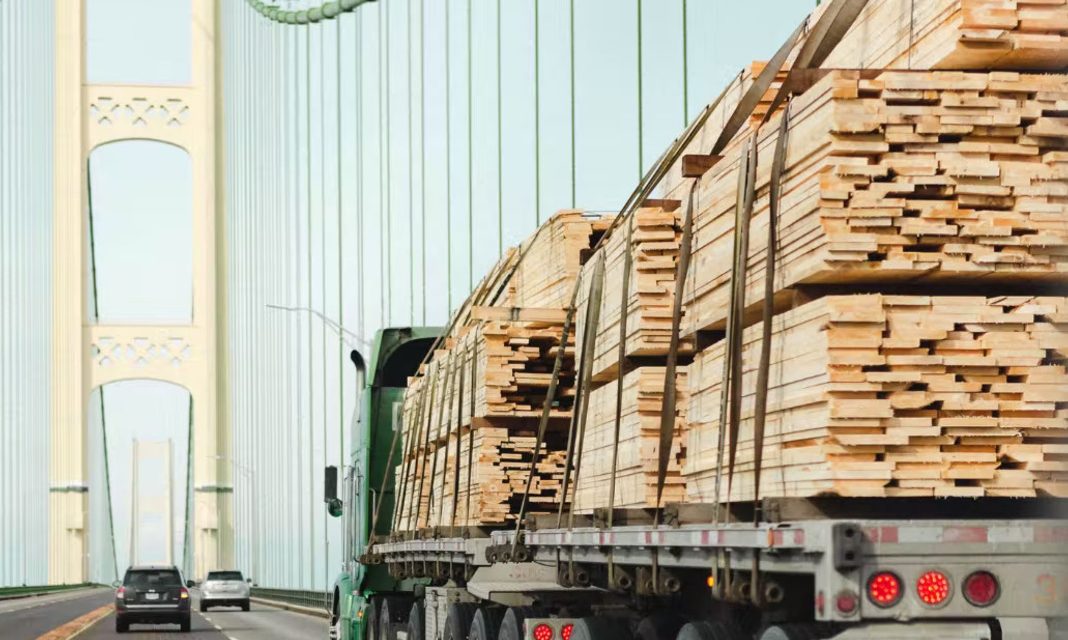House of Dispatch news
Blog
How to Secure Load on Flatbed

If you are responsible for transporting a load of any kind on the public highway, you need to ensure that you secure it properly. After all, the AAA Foundation for Traffic Safety found that there were more than 200,000 crashes over a three-year period due to debris that may have fallen from a flatbed trailer or other vehicle.
How to Secure a Flatbed Load Through Careful Calculation
To begin with, always be aware of your facts and figures. If you are hauling a load on a commercial basis, you will probably have a bill of lading from the shipper, and this will need to have accurate weights and dimensions. You need to refer to these figures individually and collectively to make sure you secure the load with the most appropriate equipment.
Start off by calculating the working load limit for your flatbed trailer, so you can deduct the weight of the trailer and determine your maximum load capacity. You will then need to figure out your tiedown equipment’s capability – the chains or straps and any fastening rings. Here, you need to know the working load limit for the equipment as well, so you can do some additional calculations. Broadly speaking, you need to make sure that the chains, straps, or rings that you use will, in combination, have a working load limit that is greater than the working load limit of whatever you are carrying.
How to Secure Loads on Flatbed Trailers: Different Categories
How to Secure a Shipping Container
While it is possible to secure a relatively small load to the back of a flatbed using conventional methods, some types of load are simply too large for straps or chains. So, in the case of a shipping container, you should use a standardized industry approach with twist locks.
Across the world, most companies use twist locks that conform to the International Standards Organization (ISO) rules. They are relatively simple to activate. So long as you take your time, you can be sure that your container will remain in place.
Each twist lock has two separate parts – the female and male connectors. These locks will retain their integrity even in the event of a sizeable accident. And, once engaged, they will be far more effective than a chain or a strap.

How to Secure a Car
The best way to secure a car on a flatbed trailer is to use ratchet straps. These are also known as tiedown straps and are made from flexible and durable material, designed to cope with a considerable amount of strain. Usually, they will be made from polyester, nylon, leather, or coated polymers, and they will have a set of hooks at each end. A cleverly designed ratcheting mechanism will allow you to tighten the straps once the car is in place.
How to Secure a Motorcycle
When you first load the motorcycle onto the flatbed, you should keep it in the middle and as far to the front as possible. Again, use ratchet tiedowns here. But you will need to be careful to do this properly as the bike is, of course, quite top-heavy.
Make sure that the bike is standing as upright as possible with its weight evenly distributed. Choose your tiedown points carefully and remember that some bike parts are not suitable and could break when under pressure. In most cases, you can choose to tie down the bike with a four-point approach. But if the machine is larger or heavier, you can choose up to eight.
When you use a four-point tiedown, ensure you attach two straps to the front and two to the rear, with a 45° angle to a D-ring on each corner of the trailer. This will maximize the load distribution and should always keep the bike upright.
Getting in Touch with House of Dispatch
After you have learned how to secure load on flatbed trailers, get in touch with us at House of Dispatch. It is our job to help drivers ensure they get the highest-paying loads possible every day. To do this, we work with shippers and brokers to negotiate all the details and get you the best rate so that you can transport the best freight at the highest price.
